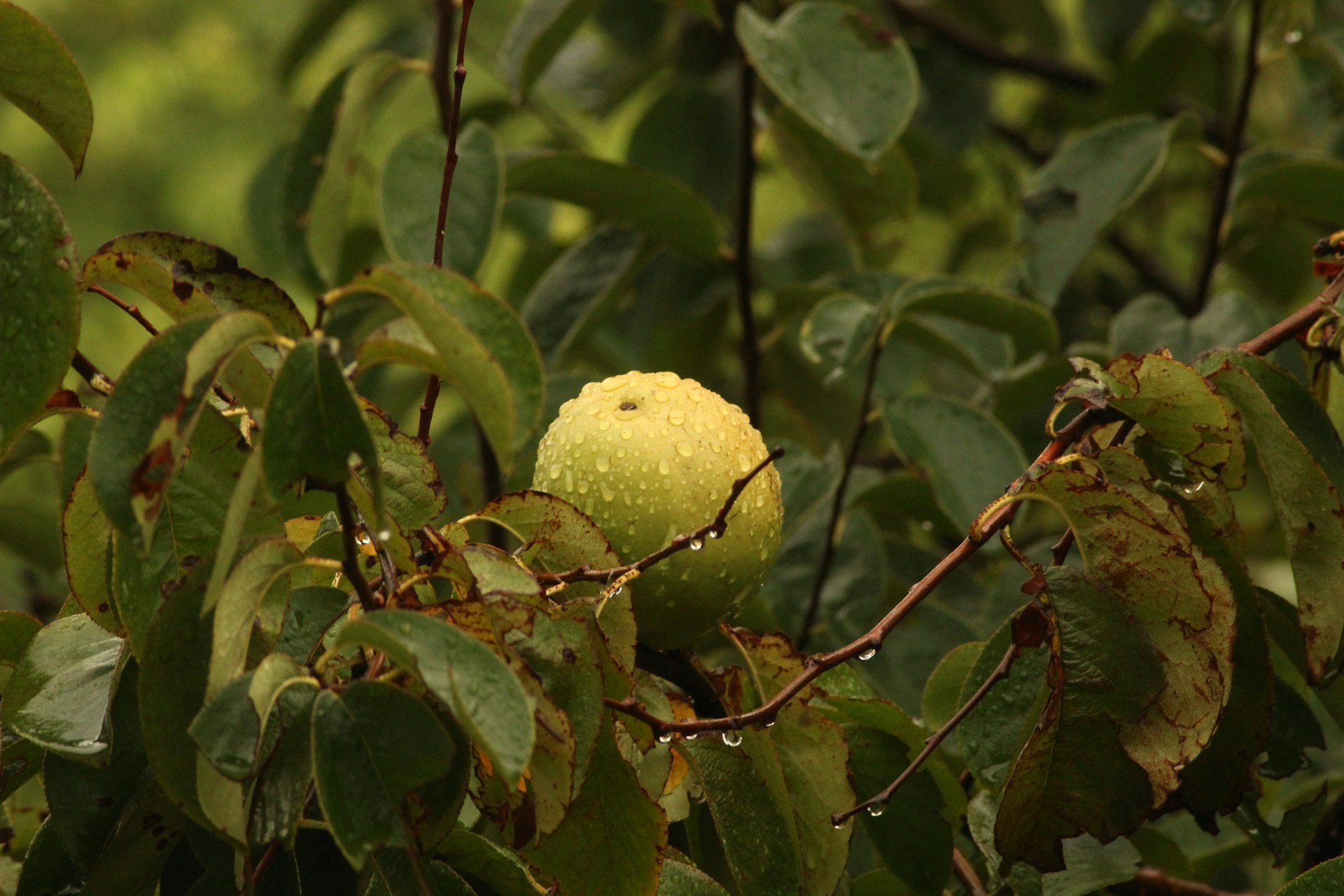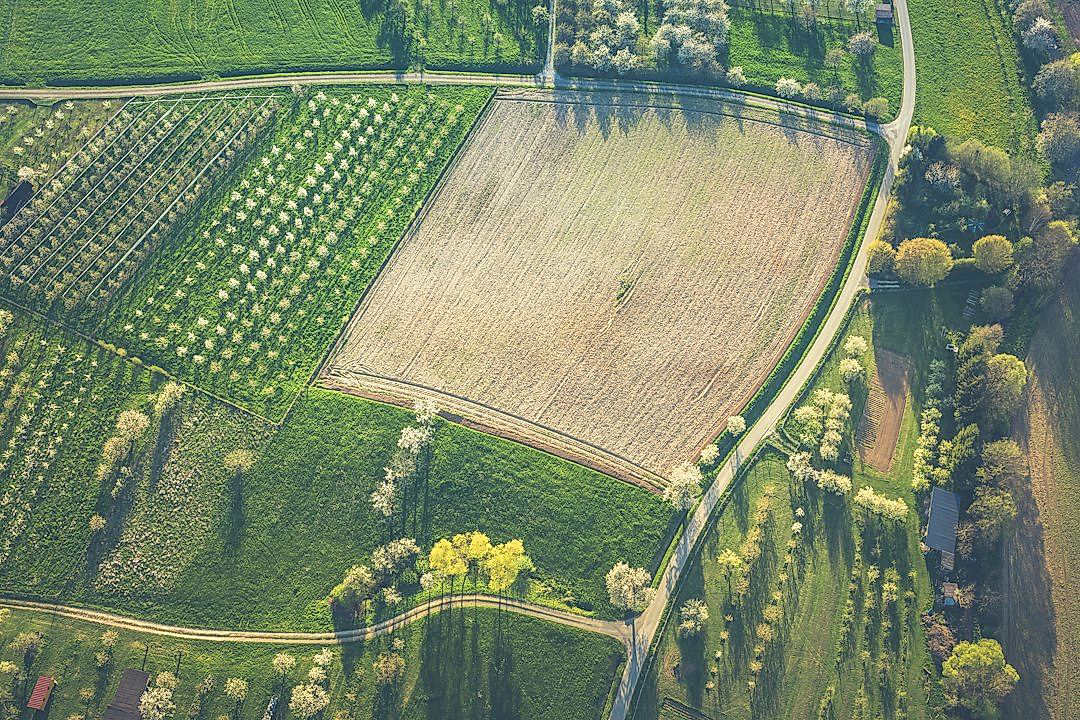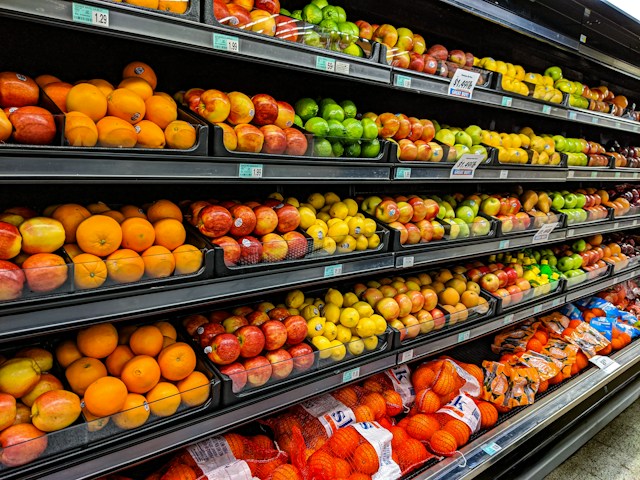Agriculture, as the backbone of numerous economies worldwide, faces significant challenges in the age of climate change.
The fluctuating temperatures, inconsistent rainfall patterns and frequent occurrences of extreme weather conditions are realities that cannot be ignored.
Addressing this pressing issue requires groundbreaking strategies that can enhance the resilience of farming produce.
It is essential for farmers to adopt innovative methodologies, ensuring that crops can withstand evolving climatic complexities.
This post looks at some fruitful farming techniques that could aid in growing climate-resilient crops.
Knowledge in this realm becomes ever more critical as we strive toward a sustainable future, bridging gaps between traditional farming practices, climate change, and a rapidly growing global population.
Contents [hide]
Farming Techniques For Climate-resilient Produce
1. Diversify crops for increased resilience
Climate change poses significant threats to the agriculture industry, among them unpredictable weather patterns, changes in seasons, increased instances of droughts, flooding, and greater prevalence of pests and diseases. Diversifying crops is an effective strategy that can be deployed to combat these challenges.
Increased resilience can be achieved by engaging in diversification at different levels such as within crop, among crops, temporal and spatial diversification.
Within crop diversification involves growing multiple varieties of the same crop, which allows each variety to survive under specific climate conditions thus ensuring at least a part of the harvest is successful, even if the other varieties fail.
Among crops diversification engages in growing different types of crops in a region, which reduces the risk of total loss from any single catastrophic event which might affect only one or few crops but not all.
Temporal diversification refers to rotating crops seasonally, which can break the cycle of pests and diseases associated with specific crops; it can also help in maintaining soil fertility which can be reduced due to continuous cultivation of the same crop.
Spatial diversification involves planting different crops in proximity to each other in polycultures or intercropping arrangements, to take advantage of synergies and reduce risk.
By employing crop diversification, farmers can increase plant ecosystem resilience to climate change through adapted plant characteristics, variety and genetic diversity.
Diversification allows farmers to spread the risk between different types of crops which can then be sold in different markets and even used to feed livestock during harsh climate conditions.
Another benefit of crop diversification is increased productivity per unit of land due to improved nutrient cycling, better pest management and optimal utilization of available resources.
Crop diversification not only provides resilience against climate change but also has the potential to increase the nutritional profile of farmed produce.
It is crucial to note that diversification should be planned according to the local agroecological conditions and market needs, to ensure maximum benefits for both farmer and consumers.
Also, wider use of diversified crops requires governmental policies which encourage diversified farming systems through incentives and ease of access to markets.
Researchers and farming communities need to work together to identify local crop species and varieties that have greater resilience to changing climate conditions.
Therefore, crop diversification serves as a multi-functional solution, not just for adapting to climate change but also for enhancing nutrition security, sustaining rural livelihoods and promoting environmental sustainability.
This way, farmers can become active agents in the fight against climate change, embedding resilience right from the heart of their farming techniques and ultimately, their produce.
Indeed, diversifying crops for increased resilience is a critical strategy in developing farming techniques for climate-resilient produce.
2. Utilize crop rotation and mixed farming
One pertinent strategy to create climate-resilient produce in farming practices is to utilize crop rotation and mixed farming.
Crop rotation is a farming technique where different crops are grown in the same area over sequential seasons.
This is essential because it allows soil nutrients to replenish naturally without the excessive use of fertilizers.
Furthermore, it can also reduce soil degradation and increase soil fertility and crop yield.
Moreover, crop rotation has been proven to suppress diseases and pests that typically thrive in monoculture systems.
Over the years, this method has been a crucial factor in sustaining agricultural yield.
These are just some of the reasons why crop rotation is a vital technique in building a resilient food system amidst changing climate conditions.
Moreover, mixed farming – the cultivation of a variety of crops and rearing of different animals on the same piece of land – is another invaluable agricultural practice which bears mentioning.
Promoting biodiversity in agriculture is one of the main merits of mixed farming.
This is because it harmonizes the natural ecosystems and hence encourages sustainable agricultural practices.
It also helps to spread the economic risk, providing a safety net for farmers in the event of crop failures due to extreme weather events and climate changes.
In fact, this strategy is particularly favorable for smallholder farmers in developing countries, where crucial resources like land and water might be scarce.
By utilizing crop rotation and mixed farming techniques, farmers can adapt to the unpredictable nature of climate change, ensuring agriculture remains sustainable and resilient.
Besides contributing towards climate-smart agriculture, these practices also offer numerous economic and environmental benefits.
It is evident that these techniques can play a significant role in ensuring the agriculture sector’s survival and progress amidst an increasingly volatile climate.
3. Implement water-efficient irrigation systems
As the world grapples with the effects of climate change, one of the primary areas of concern in agriculture is utilizing water-efficient irrigation systems.
Water is a valuable resource that often becomes scarce during periods of drought, a phenomenon that is expected to become more common with climate change.
For farmers looking to sustain their crop yields and ensure the productivity of their lands under these challenging conditions, implementing water-efficient irrigation systems becomes an imperative need.
When used correctly, these systems represent a powerful tool for climate-resilient farming.
By using irrigation technologies that minimize water waste, farmers not only secure their own livelihoods but contribute to global sustainability.
Water-efficient irrigation systems can significantly reduce the volume of water needed for successful cultivation, thus lowering the pressure on precious water resources.
Techniques such as drip irrigation and precision sprinklers deliver water directly to the plant roots, reducing evaporation and runoff.
This targeted delivery of water also minimizes the risk of pathogen growth and weed proliferation, improving overall plant health and yield.
Moreover, when combined with water-saving techniques such as mulching and planting cover crops, these systems further improve soil moisture retention and slow down the evaporation process.
Additionally, employing technologies that utilize real-time data on weather conditions and soil moisture content can optimize irrigation scheduling, ensuring that water is applied only when and where it is needed.
Crucially, the implementation of efficient irrigation is not a one-size-fits-all approach – the suitability of different systems depends heavily on the specific characteristics of the farm, including climate, soil type, and crop variety.
Thus, farmers must work closely with agronomists, hydrologists, and other experts to design and adapt these systems to their particular needs.
It is also crucial to recognize that water-efficient irrigation is not a standalone solution for climate-resilient farming.
Rather, it forms one key component of an integrated management strategy that includes diverse cropping systems, soil conservation, and the use of drought-resistant varieties.
As climate change continues to exacerbate water scarcity, the adoption of water-efficient irrigation systems serves as a fundamental step towards securing the future of farming, thereby ensuring food security for generations to come.
4. Promote Soil Conservation Techniques
Promoting soil conservation techniques is a fundamental part of implementing farming strategies for climate-resilient produce.
Soil conservation refers to a variety of practices that aim to prevent soil from being eroded, degraded or lost.
This not only ensures the health of the soil but also increases its capacity to sequester carbon and mitigate the impacts of climate change.
One commonly used soil conservation technique is contour plowing.
This technique involves plowing along the contours of a hill, which helps to prevent soil erosion by reducing the water runoff.
The adoption of cover crops is another key soil conservation strategy.
Cover crops are plants that are grown not for harvest, but rather to protect and enrich the soil.
They not only prevent soil erosion but also improve soil structure, increase organic matter and enhance soil fertility.
Moreover, cover crops can help to manage water usage, another important factor in making farming more resilient to climate change.
Terracing, where steep hillside is transformed into a series of step-like platforms, is another effective soil conservation technique.
It not only reduces soil erosion but also assists in water management.
Agroforestry, the practice of integrating trees and shrubs into crop and animal farming systems, is another important soil conservation technique.
This technique improves soil quality, promotes biodiversity, and sequesters carbon, all of which can contribute to farming resilience in the face of climate change.
Moreover, applying organic mulches can be beneficial as it protects the soil from erosion, retains moisture and improves soil fertility.
Finally, promoting understanding and awareness of the importance of soil conservation – among farmers and the general public – is an essential step in fostering sustainable and resilient agricultural practices.
By integrating these soil conservation techniques into their farming practices, farmers can not only improve their crop yield and sustainability, but also build resilience against the challenges posed by climate change.
5. Encourage Use of Drought-Resistant Crop Varieties
One impactful way to cultivate climate-resilient produce is through the promotion and use of drought-resistant crop varieties.
Drought-resistant crops are essential in regions prone to periods of little or no rainfall.
These crop varieties are specifically bred to tolerate harsh, dry conditions and can contribute towards ensuring food security under climate change conditions.
Highly drought-resistant crops are able to survive solely on the moisture in the soil, even under extreme drought conditions.
These traits mean that cultivating such crops can mitigate the risk associated with unpredictable rainfall patterns.
Several commercial crops such as maize, wheat, and rice now have drought-resistant varieties available.
These crop varieties have been developed through conventional plant breeding methods and more recently through genetic engineering.
Genetic engineering has provided an opportunity to insert specific genes into the plants that make them more tolerant to drought conditions.
Many of these crops also show improved water-use efficiency, an added benefit in the current global scenario where water shortage is a significant concern.
Not only do drought-resistant crops help secure our food supply, but they may also prove to be economically beneficial for farmers.
Adoption of such crops should be encouraged and supported through favourable policies and innovations in farming practices.
Educating farmers about the benefit of these crops and providing them with the necessary resources can accelerate the uptake of drought-resistant crop varieties.
Furthermore, farmers need to be trained in the best practices for cultivating these crops to ensure maximum productivity.
Drought-resistant crops have shown promising results in areas prone to water scarcity and can contribute substantially to the development of climate-resilient food systems.
The promotion of drought-resistant crops is a crucial part of the more comprehensive response necessary to address the complicated challenges of climate change and food security.
The Bottom Line
Proactively addressing agricultural sustainability ensures a productive and resilient food system.
By broadening diversity in crop selection, utilizing practices such as crop rotation and mixed farming, we can improve soil health and mitigate pest issues.
Harnessing water-efficient irrigation systems can maximize productivity while minimizing water waste.
Soil conservation techniques help preserve our most vital resource for future generations.
Furthermore, embracing drought-resistant crops will provide an additional buffer against climate unpredictability.
Therefore, implementing these measures is not just an option, but a necessity, to ensure the survival and prosperity of our agricultural systems.




